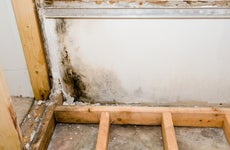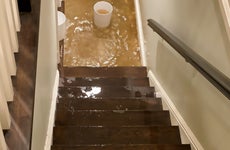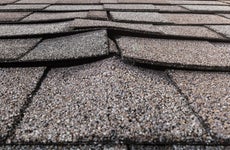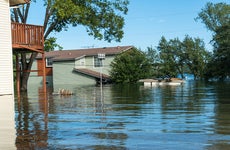Does homeowners insurance cover roof leaks?
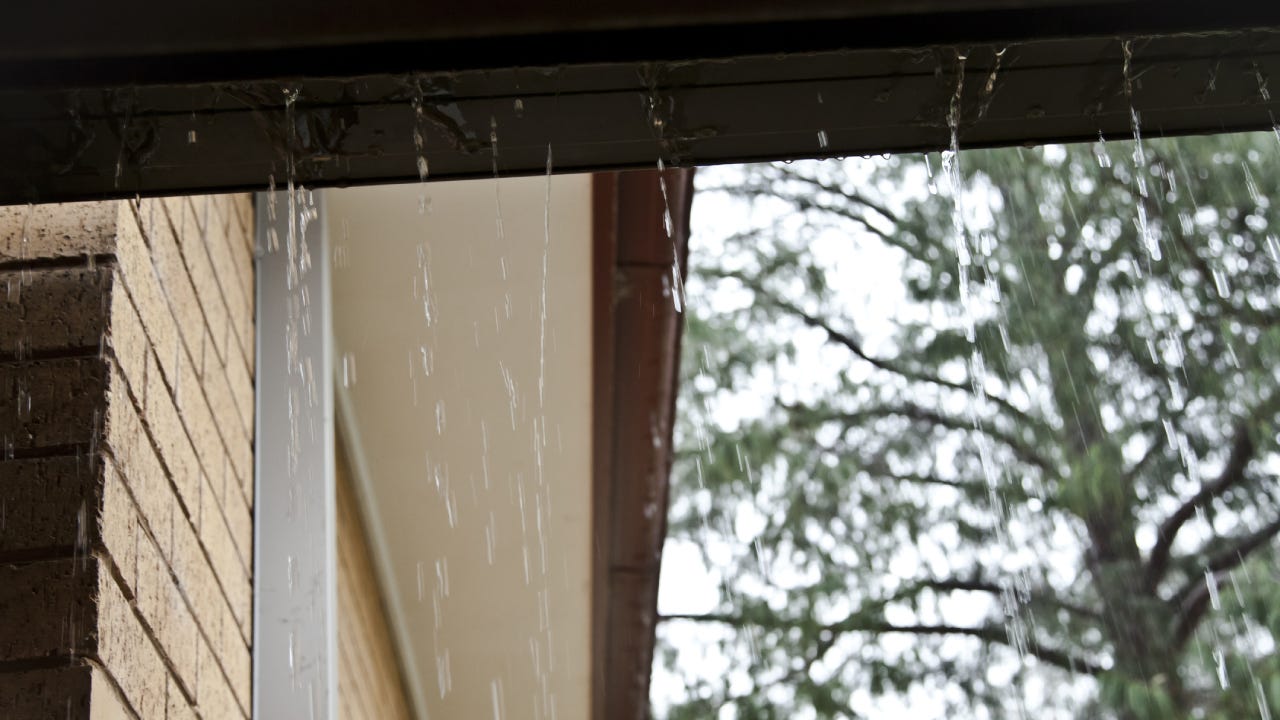
The Bankrate promise
At Bankrate, we strive to help you make smarter financial decisions. To help readers understand how insurance affects their finances, we have licensed insurance professionals on staff who have spent a combined 47 years in the auto, home and life insurance industries. While we adhere to strict , this post may contain references to products from our partners. Here's an explanation of . Our content is backed by Coverage.com, LLC, a licensed entity (NPN: 19966249). For more information, please see our .
Hearing water drip in your home is almost always an immediate cause for concern. Roof leaks can destroy flooring, drywall and furniture, on top of creating mold and mildew. Home insurance does cover roof leaks in some instances, but there are common exclusions to be mindful of. Bankrate’s insurance editorial team, which includes licensed insurance agents, put together this guide to help you understand what may and may not be covered by home insurance when it comes to leaky roofs.
Key takeways
- Home insurance usually covers roof leaks caused by covered perils but not damage caused by normal wear and tear or other excluded perils.
- If caused by a covered peril, your home insurance will typically pay to repair or replace your roof and address any damage caused by the leak, minus your deductible.
- Regularly inspecting your roof and repairing any damage may help you avoid leaks.
Does home insurance cover roof leaks?
If your roof or ceiling leaks due to a covered peril, the associated damage should be covered under your homeowners insurance policy. Most types of home insurance policies cover your home’s physical structure on an open peril basis. This means that your roof is usually covered from all sources of damage except ones specifically excluded from your policy.
For example, if a storm comes through and wind blows some of your roof shingles away, causing rain to leak into your ceiling, the associated roof leak would most likely be covered by your home insurance. However, if there is a slow leak due to deteriorated or incorrectly installed chimney flashing, for example, any ensuing damage may not be covered by your policy.
Under most standard HO-3 policies, the following perils are commonly excluded from coverage:
- Ground movement caused by earthquakes, landslides or sinkholes (unless you opt for a specific endorsement to be added to your policy)
- Floods
- Mold
- Normal wear and tear
- Infestations of any kind – bedbugs, termites, mice, etc.
- Nuclear accidents
- Pet damage
- Government action
- Settling of the foundation
- Theft if the dwelling is under construction
- Vandalism if the property is vacant
- Certain dog breeds
- Intentional loss or neglect
- Broken or frozen pipe burst in a vacant home
- Foundation or pavement damage caused by the weight of ice or snow
Will home insurance cover water damage from a roof leak?
The initial cause of the roof leak will determine if your homeowners insurance will cover the water damage. Typically, if the leak was caused by a covered peril, then it will be covered by your home insurance. The dwelling coverage portion of your homeowners insurance policy should pay to fix the damage to the structure of the home while the personal property coverage portion pays to replace or repair damaged belongings, up to your coverage limits.
Depending on the extent of the roof damage, your homeowners insurance may pay for a roof repair or replacement. However, if hurricane windstorm damage causes the leak, your claim may be subject to a hurricane windstorm deductible rather than the standard policy deductible.
Mold caused by a roof leak may be covered in some circumstances, depending on your home insurance policy, the time passed since the initial cause of loss, how quickly your claim is resolved and repairs are able to be completed, as well as any specific endorsements you may have.
How do I find a roof leak?
It is best to find a roof or ceiling leak as soon as possible to minimize the water damage caused and increase your chances of having it covered under your homeowners insurance policy. Experts recommend several steps to take to find a roof leak:
- Pinpoint the source of the leak: If you notice water marks on your ceiling or mold along the walls, there may be a leak somewhere nearby. If the ceiling is leaking, check the room above for potential causes, soft flooring or other indicators of water damage. If the roof is leaking, search for points of entry, such as missing, damaged or cracked shingles, vent pipe or chimney cracks and missing gutters. You can also check your attic for signs of water damage or mold, especially on a rainy day. Rotted wood and moldy insulation are common signs of water leaks.
- Make repairs right away: Once you find the source of the leak, it is important to make repairs right away to minimize damage. You may be able to DIY some repairs while others will require a professional. If you have to file a claim, then document the process closely before making any changes.
- Check your roof regularly: Make sure your roof is in good working order by checking it regularly. Check if there are any cracked, damaged or missing shingles, and replace them promptly. Ensure the chimney and vent pipes are not damaged and the flashing is still tacked in place.
- Watch your top-floor ceiling: By inspecting your ceiling on the top floor of your home regularly, you might catch small leaks before they become a big problem. If there is any damage to your highest ceiling, check the attic and roof for damage right away.
Should I file a claim for a leaky roof?
If the cause of your leaky roof is sudden and accidental, there is a good chance it is covered by your homeowners insurance. However, if the roof leak has been there for some time or is caused by wear and tear, the insurance company will likely deny the claim. Damage caused by an excluded peril will not be covered, so you may want to read your home insurance policy before deciding whether to file a claim.
Also, consider the age of your roof. If it is old and needs repairs, there is a chance the claim will be denied. If this happens, you may get a remediation letter from your homeowners insurance company requiring your roof be repaired or replaced, or your insurance policy could be canceled or nonrenewed. In some states, coverage of roof damage is determined by actual cash value, meaning the roof repair or replacement is subject to depreciation.
Any claim you file with your home insurance company has the potential to raise your rates, even if nothing has been paid out. Each insurance company has its own rules on how home claims impact rates. If you are unsure about filing a claim, you may want to schedule a roof inspection to assess the damage to help you determine if you want to call your insurance company about a roof leak and file a claim.
Frequently asked questions
-
-
It depends. In some cases, your insurance company may offer a discount if you replace your roof, especially if you use certain materials, like impact-resistant shingles or specific green or environmentally friendly materials. If you want to know whether your specific policy will be cheaper after replacing your roof, it may benefit you to ask your insurance agent about any eligible discounts prior to getting the work done.
-
If you’re replacing your roof as part of a covered homeowners insurance claim, you will almost certainly have to pay your deductible. The total amount you owe for your deductible is typically determined by what caused the damage and the deductible amount you chose when you purchased your homeowners insurance policy. If the damage is caused by a hurricane windstorm, your claim may be subject to your hurricane windstorm deductible, rather than your standard policy deductible.
-
Whether you should repair or replace your leaky roof likely depends on the extent of the damage, the age of the roof and your budget. Some repairs may be very minor, and the total repair costs may be below your home insurance deductible. In that case, it may be worthwhile to either fix the repair yourself or hire a roofer. However, if the leak is extensive, you may be better off filing a claim through your insurance agency. Scheduling a roof inspection or consulting a local roofer may be the best way to assess the level of damage and potential repair costs for your roof.
-
Ceiling leaks may or may not be caused by roof leaks. Many plumbing issues may affect your ceiling but leave your roof unharmed. Just like with roof leaks, if your ceiling leak is caused by a covered peril, it will likely be covered by your home insurance. However, plumbing backups are not typically covered by home insurance, so you would need a sewage backup endorsement to cover a plumbing leak in your ceiling. Reading through your home insurance policy or consulting your insurance agent may be the best way to find out what your specific home policy covers.
-
Related Articles
